Verso:
‘on Great North Road 1903’
‘McAlpine’
Pencil: ‘Noble Horse’

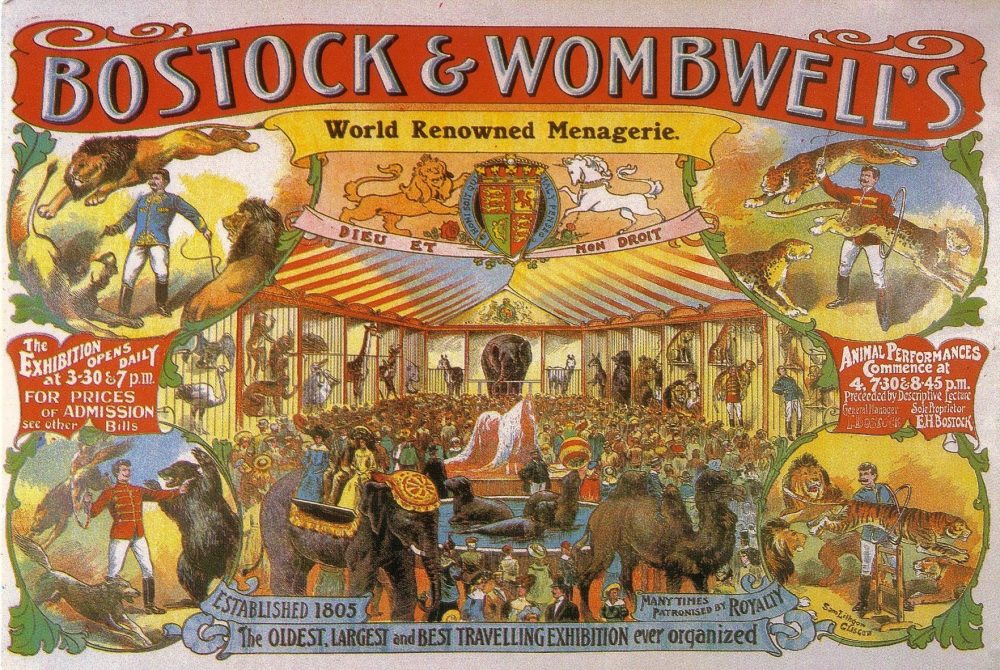
Verso:
‘on Great North Road 1903’
‘McAlpine’
Pencil: ‘Noble Horse’

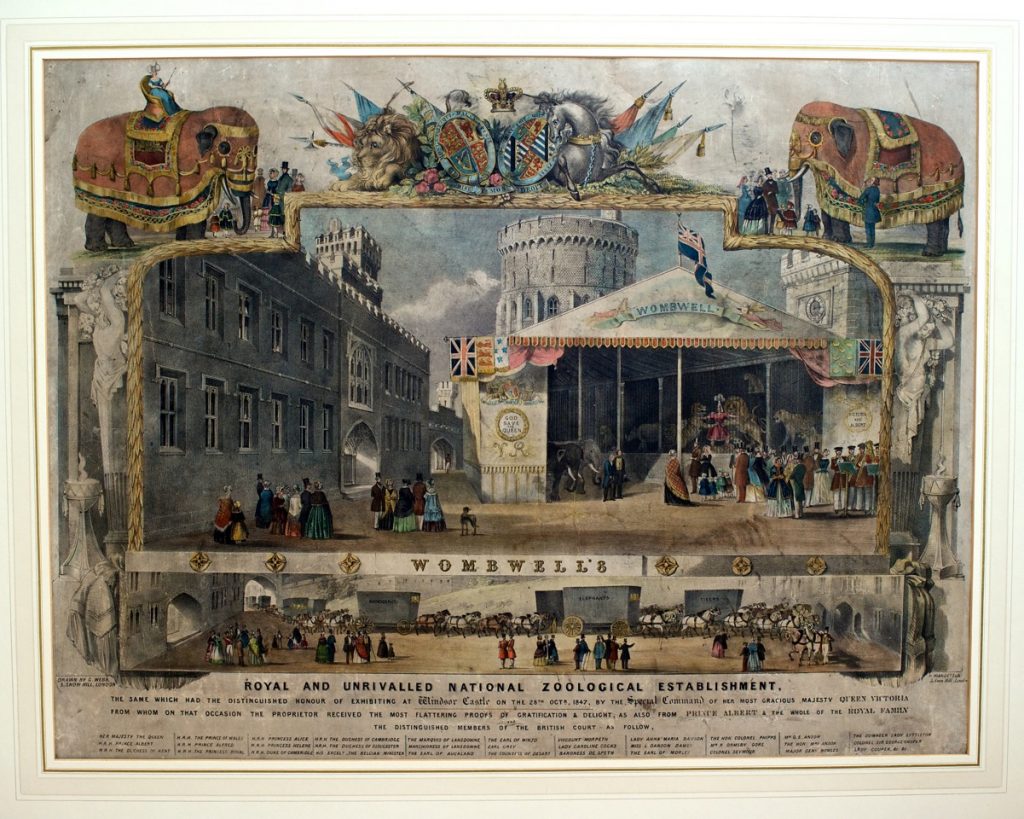
The travelling menagerie, which refers to the practice of showcasing exotic animals in traveling shows and circuses, can be understood in the context of imperialism and its association with Great Britain during the 19th and early 20th centuries. The menageries were closely tied to the imperial ambitions of Britain and other European powers during this period. Here are some key points to consider:
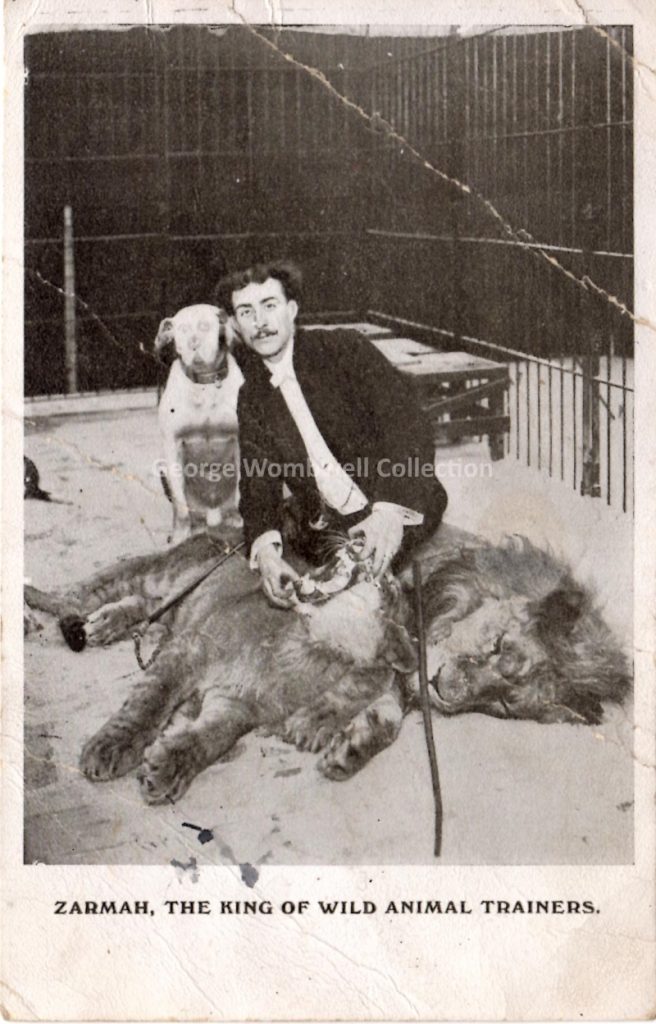
In conclusion, the travelling menagerie can be seen as a manifestation of British imperialism during the 19th and early 20th centuries. It was a practice closely tied to the exploration, exploitation, and display of the empire’s conquests, showcasing the exotic and wild aspects of lands under British control. Today, the historical context of the travelling menagerie serves as a reminder of the complexities and consequences of imperialist endeavors and the changing attitudes toward animal welfare and conservation.
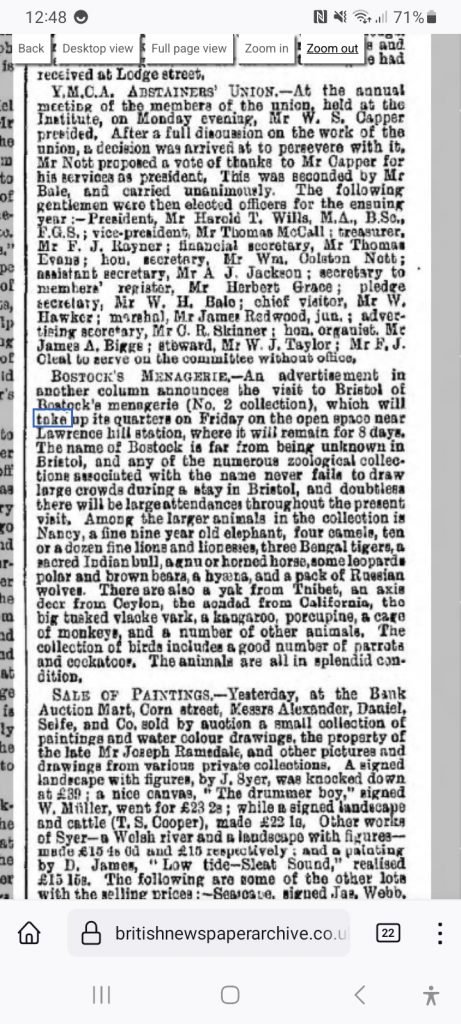
Wessex Archaelogy are to look for a dead elephant near Kingswood, Bristol. Here’s The Observer link to the report.
I have doubts they will find much other than bones. Bones with lots of ‘hacks’ on them. At £400 a time the late Victorian menagerist, EH Bostock (or in this case his brother in law Frank Bostock (Little Frank*)), would have extracted as much of the meat from the bones to feed to the other beasts in the menagerie.
However, if they do find anything of the elephant, then the forensics would be interesting. The pit would, of course be large and easy to spot methinks!
Psst! There’s an elephant buried on the banks of The Clyde River. Don’t tell anyone.
There’s one buried at Smithfields market too!
*Not to be confused with E H’s brother Frank (Big Frank)
hattip to Heather for these reliable facts.
A carte de visite is now part of the archives. It shows a Victorian lady in mourning dress. Across the back is pencilled ‘Mrs Wombwell’. Could this be the enigmatic ‘Mrs Wombwell’ of Menagerie fame? The carte was made either in Newcastle or London by the studios of W & D Downey a popular photographer to the Royal family and others.
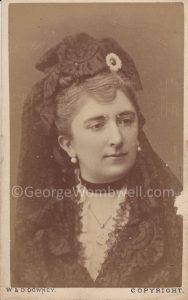
Image of Mrs Wombwell
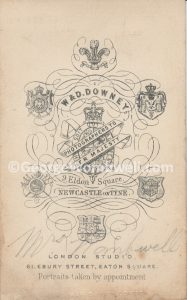
Back view of Carte
There’s no guarentee of this being George’s partner, but the locations are consistent with Mrs Wombwell travelling to Newcastle or being photographed in London. The eminence of Downey might also suggest the wife of Sir George Orby Wombwell, 4th Baronet, although he married Lady Julia Sarah Alice Child-Villiers who would not have been known as plain Mrs! Incidentally, Villiers is also one of my names too and other relatives existed in Maldon, Essex during the twentieth century with the same family name.
*Downey was an active studio from the mid century to the end of the nineteenth century.
I’ll keep an open mind on its authenticity.
The following cartoon is centred on a menagerie booth (Reise Grose Menagerie) where panic has apparently broken out due to an escaped lion (Lowe Kommt! – Lion Coming!). It probably appeared in a German magazine during the mid nineteenth century.
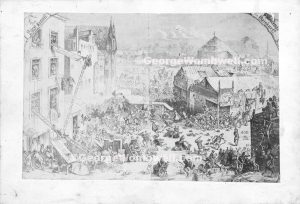

Macomo and friends by George Christopher Horner. Oil on Canvas, whereabouts unknown
This is probably the closest we will get to knowing how Martini Macomo[Maccomo] (1835 or 1836–1871), the Lion King appeared to his audience. He has been described in the Dictionary of National Biography as being born in Angola (1861 Census aged 25 residing in Bath), although Frost suggests he was a sailor. Others suggest he may have been one Arthur Williams from the Caribbean. This representation was painted by George Christopher Horner (1829 – 1881), an accomplished Victorian animal painter as Macomo and friends. Current whereabouts unknown.